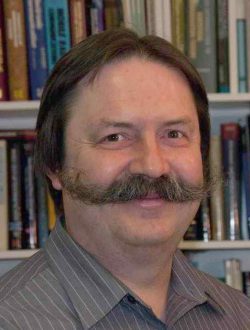Biography
Sadly, Dr. Earl McCune passed away on May 27th, 2020.
Earl McCune (S’78–M’79–SM’97–F’18) received the B.S.E.E./C.S. degree from the University of California (UC), Berkeley, CA, USA, the M.S.E.E. degree from Stanford University, and the Ph.D. degree from UC Davis, CA, USA. He was a Silicon Valley serial entrepreneur, with 93 issued U.S. patents and the author of two books. His research interests included RF circuits and systems, including modulation design, with an emphasis on the joint optimization of throughput and energy efficiency while also minimizing implementation cost. He was an emeritus MTT Distinguished Microwave Lecturer, a member of multiple IEEE conference committees and served as the Chair of the Energy Efficient Communications Hardware Standards Working Group. His considerable work experience included stints at NASA, Hewlett-Packard, Watkins-Johnson, Cushman Electronics, Digital RF Solutions (start-up #1), Proxim, Tropian (start-up #2) and Panasonic, and Eridan (start-up #3) where he was CTO. He was a Professor of Delft University of Technology, where he held the chair of sustainable wireless systems.
Presentations
Embrace Circuit Nonlinearity to get Transmitter Linearity and Energy Efficiency
Wireless communications signals have evolved greatly over the past century, from the use of Morse Code to very complicated digital modulation schemes such as wideband CDMA (WCDMA) and 3GPP Long-term evolution (LTE). This progression challenges the design of transmitters to be simultaneously energy efficient, low distortion, and spectrally clean. The increasing peak-to-average power ratio (PAPR) characteristic of these signals is a particular problem. Because it is important to understand why this is happening this presentation begins with a discussion of the physical implications of Shannon’s Capacity Limit combined with the Fourier Transform.
A ‘backwards’ design perspective is then presented, where we begin design from a maximally energy efficient circuit (a switch) and then make it generate the required signals instead of the conventional approach of beginning with linear circuitry and then finding ways to improve its energy efficiency. This directly leads to the design and implementation of polar-modulation to improve both the energy efficiency of the power amplifier and linearity of the transmitter. Design of intentionally compressed circuitry is very different from conventional linear amplifier techniques, and these new design techniques will be discussed.
The presentation will cover the use of both linear amplifiers and switches for the power amplifier module, and the implications of using these approaches on the power supply design, system integration, and performance measures. This presentation will bring the subjects of OFDM, Shannon’s theorem, spectral efficiency, and switch-mode amplifiers together in an exposition of polar modulation transmitters that is both entertaining and informative.
